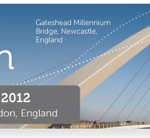The new Dell DR4000 Advanced Disk Backup and Disaster Recovery Solution was lauched during the last Dell Storage Forum and can optimize data management while reducing reliance on tape backups. The new Dell DR4000 Storage Platform which combines the performance and reliability of disk-based backup with innovative deduplication and compression capabilities from Dell’s Ocarina Networks acquisition.
The DR4000 will compete directly with the EMC Data Domain DD160, Quantum DXi4000, Hewlett-Packard D2D StoreOnce, and ExaGrid’s EX Series. Before this product, Dell has sold EMC Data Domain solutions or specific backup vendor solutions, now it start to play in this market (as also reported in the Info-Tech analysis).
See also:
- Dell launches DR4000, its first backup deduplication appliance
- Dell DR4000 advanced disk backup and disaster recovery solution
- Dell DR4000: Demystifying Data Duplication for Small Businesses
Here are the DR4000 highlights:
- Eliminate redundant copies of data by decreasing disk capacity requirements up to 15 times
- Reduce dependence on tape backup
- Reduce bandwidth requirements for data transfer by up to 15 times
- Reduce backup storage costs to as low as $0.25/GB
- Reduce the footprint of backup delivering power and cooling savings in the datacenter
Because the product is developed by Dell both in the hardware and the software part, there can be interesting growing both in the technology and in the value for money. Actually it costs as similar products, but if you compared with a full 12 disks PowerEdge R510 you can understand what could be the software cost of this kind of product. And I hope that Dell may be release a limited version the the specific target of SMB market (in the same way as the PS4xxx model of EqualLogic).
Technical information
The DR4000 Disk Backup System is a scale-out disk-based backup target storage solution with highly efficient de-duplication and compression algorithms. It uses a multi-node architecture in which each node maintains its own local storage and local file system and can perform inline de-duplication and compression processing. Data is received into the “ingest buffer” on the NVRAM card and processed in quasi-real-time. Read requests are serviced from the ingest buffer until the data has been de-duplicated and stored permanently in a data suitcase, which is a logical container that contains a metadata header followed by up to 1,024 data chunks along with a reference count for each.Although data and metadata are stored within a local file system on each DR4000 node, the structure of this file system does not resemble the namespace presented to the end user. The metadata server component keeps track of the externally visible namespace, and maps it onto specific objects stored on a specific node in the DR4000.
The chassis is based on the “full disks” version of the R510:
- Dual Intel Xeon E5645 2.53Ghz processors
- Redundant Power Supplies
- 32-GB, 1333MHz Dual Ranks RDIMMs
- Marvell 8G NVRAM card – In addition to the 8GB of DDR3 DRAMM, the NVRAM card has a 16-GB SD chip and two super-capacitors. In the event of power loss, data from DRAM is copied to permanent flash memory using backup power supplied by the super-capacitors
- Two x 2.5-inch 300-GB, 10K RPM 6Gbps SAS internal drives (for the operating system)
- 12 3.5-inch, 300-GB, 600-GB, or 1TB 6-Gpbs SAS drives (for data storage)
- Four 1Gb Ethernet, Base-T – Dual 1GbE Lan on motherboard bonded with Broadcom Dual Port 1GbE Base-T NIC, or two 10Gb Ethernet Base-T – Intel Dual Port 10GbE Base-T NIC
For more information see also this link.












